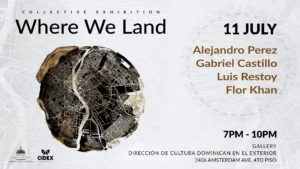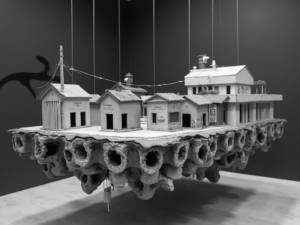The MoMA has almost always dedicated one of its rooms to the world of kinetic art, and I have always immersed myself in that universe where movement is not just a characteristic, but the very spirit of the work. From the very first moment, this type of art challenged my perceptions of stasis and invited me to experience art in a different way.
At the beginning of the exhibition dedicated to kinetic artists like Alexander Calder and Jean Tinguely, I was greeted by a series of mobile sculptures that spun and swayed in the air, dancing to the rhythm of the breeze. Calder’s colorful forms, with their delicate and bold lines, seemed to come to life, as if they wanted to tell me a story that I could only understand through movement. I watched as the shadows projected by their works transformed continuously, creating a visual spectacle that made me reflect on the relationship between the object and the space.
As I contemplated these pieces, I realized that kinetic art was a form of dialogue between the viewer and the artwork. Unlike traditional sculptures, which often remain motionless and silent, these works seemed to require my participation. Every movement I made while walking around them transformed the experience. I felt like an accomplice in the creation of art, as if every step I took activated something new. This sense of interactivity was refreshing and stimulating, a break from traditional notions of contemplation.
One of the works that impacted me the most was Tinguely’s “The Machine to Live,” a mechanical installation that made noise and vibrated in an almost chaotic manner. Its irreverent appearance and playful function made me think of art as a form of play. Observing how the metal pieces moved and collided, I felt that Tinguely was inviting me to reflect on the relationship between art and technology, as well as the ephemeral nature of artistic creation. The work seemed a celebration of the absurd, a critique of the seriousness of contemporary art.
As I continued to explore, I couldn’t help but think about how kinetic art reflects the dynamics of our modern life. In an era marked by constant movement, acceleration, and transformation, these works resonated deeply. Amid the daily whirlwind, kinetic art became a reminder of the beauty of change and impermanence. I wondered if, by observing these works, I was not only witnessing their physical movement but also a metaphor for life itself.
However, I also found myself reflecting on the limits of kinetic art. Was movement enough to define the artistic experience? While admiring the works, I sometimes questioned whether the lack of a deeper narrative left an emotional void in the connection. At the end of the day, art must not only be visually striking; it also has to resonate on a personal level. Still, I understood that the challenge and exploration of kinetic art are valuable in themselves, even if they sometimes left me with unanswered questions.
As I exited the exhibition, I carried with me a mix of admiration and reflection. The experience of kinetic art had transformed my understanding of what art can be. I had learned that movement is not just about physical dynamism but also a mental state, a change in how we interact with the world. This type of art had pushed me to embrace uncertainty and fluidity, reminding me that life, like art, is in constant transformation.
That night, as I reflected on what I had experienced, I understood that kinetic art is a reflection of our own search for meaning in a moving world. It invites us to see beyond superficiality and to explore the complexity of existence. In its dance of shapes and colors, kinetic art had revealed to me that, ultimately, art is a celebration of change, a reminder that, although the world is in constant motion, there is beauty in every turn and in every transformation.









